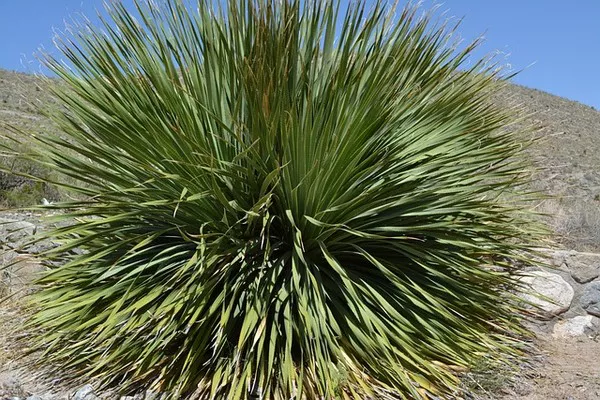Plants, the green powerhouses of our planet, rely on sunlight to perform photosynthesis, a process that converts sunlight into energy essential for their growth and survival. However, there are instances where plants find themselves in low-light conditions or even darkness. In such situations, they must adapt and employ alternative strategies to endure and thrive. This article explores the fascinating world of plant adaptations and resilience, shedding light on how long plants can live without sunlight.
The Basics of Photosynthesis
To understand the concept of plants surviving without sunlight, it’s crucial to first grasp the fundamentals of photosynthesis. Photosynthesis is the process by which plants, using chlorophyll and other pigments, convert light energy from the sun into chemical energy stored in glucose and other organic compounds. This energy powers various biological processes, enabling the plant to grow, reproduce, and maintain its overall health.
Plants rely on a series of complex biochemical reactions during photosynthesis, which involves the absorption of light, splitting of water molecules, and the synthesis of carbohydrates. The key ingredients for photosynthesis are light, carbon dioxide (CO2), and water (H2O). When deprived of one of these crucial elements, plants must adapt to survive.
Adaptive Mechanisms
Plants have evolved remarkable adaptive mechanisms to cope with low-light or no-light conditions. These adaptations can help them survive for varying durations without sunlight. Let’s delve into some of these strategies:
Energy Reserves: Plants store energy in the form of carbohydrates, such as starch, in their roots, stems, and leaves. When light is scarce or absent, they can tap into these reserves to sustain themselves. The duration for which a plant can rely on these reserves depends on its species, size, and the amount of stored energy.
Etoliation: In response to low-light conditions, many plants exhibit etiolation, a growth pattern characterized by elongated, weak stems and pale, thin leaves. This strategy allows them to reach for available light sources, such as a nearby window or a break in the canopy. While this adaptation may enable survival for a limited time, it is not a long-term solution.
Heterotrophy: Some plants can temporarily switch to a heterotrophic mode of nutrition, relying on organic matter from external sources. This is typically observed in certain parasitic plants, such as broomrape and dodder, which tap into the vascular systems of host plants to obtain nutrients and water. While this adaptation allows them to persist in low-light conditions, it is not a sustainable long-term strategy for most plants.
Resilience to Darkness: Certain plant species, such as ferns and mosses, are adapted to grow in low-light environments, including the forest floor. These plants have evolved to tolerate extended periods of darkness and can live for years without direct sunlight. They have specialized mechanisms for efficiently using available light and nutrients.
Temporary Dormancy: In extreme cases of prolonged darkness, some plants can enter a state of dormancy to conserve energy. During dormancy, the plant’s metabolic processes slow down, and growth comes to a halt. When conditions improve, the plant can revive and resume normal growth.
The Duration of Survival
The duration for which a plant can live without sunlight varies widely among species and depends on several factors:
Species: Different plant species have varying degrees of tolerance to low-light or no-light conditions. Some are naturally adapted to thrive in the shade, while others require ample sunlight for optimal growth. For example, shade-loving plants like ferns and mosses can persist in darkness for years, while sun-loving species may struggle to survive even a few weeks without light.
Stored Energy: The amount of stored energy in a plant’s reserves, primarily in the form of carbohydrates, plays a significant role in determining its survival duration without sunlight. Larger plants with more extensive energy stores can endure longer periods of darkness.
Environmental Conditions: Environmental factors, such as temperature and humidity, can influence a plant’s ability to survive without sunlight. Warmer temperatures may increase metabolic rates, potentially depleting energy reserves more quickly, while cooler temperatures can slow down metabolic processes, prolonging survival.
Age and Health: The age and overall health of a plant also affect its ability to withstand darkness. Young, vigorous plants may have more resilience, while older or stressed plants may struggle.
Alternative Light Sources: In indoor settings, plants can sometimes survive for extended periods with indirect or artificial light sources, such as fluorescent or LED lights. These sources may not provide the full spectrum of natural sunlight but can sustain certain plant species for longer durations.
Case Studies
To illustrate the diversity of plant responses to low-light conditions, let’s examine two contrasting case studies:
Snake Plant (Sansevieria trifasciata): The snake plant is a popular houseplant known for its resilience in low-light conditions. It can tolerate extended periods of reduced sunlight and can thrive in indoor settings with minimal natural light. The snake plant’s adaptability to low-light conditions makes it an ideal choice for homes and offices with limited sunlight.
Tomato Plant (Solanum lycopersicum): Tomato plants are considered sun-loving plants that require full sunlight for optimal growth and fruit production. Without sufficient sunlight, tomato plants may exhibit stunted growth, produce fewer flowers and fruits, and eventually wither. Their limited tolerance for low-light conditions makes them unsuitable for indoor environments without supplemental lighting.
Conclusion
Plants, in their quest for survival, have developed a range of adaptive mechanisms to endure periods of low-light or no-light conditions. The duration for which a plant can live without sunlight depends on factors such as species, stored energy reserves, environmental conditions, age, and health. While some plants can persist in darkness for extended periods, others require consistent access to sunlight for growth and vitality. Understanding these adaptations and factors is essential for successfully cultivating and caring for plants in various environments, both indoors and outdoors. Whether you have a shade-loving fern or a sun-craving tomato plant, providing the right conditions is key to their long-term health and well-being.


